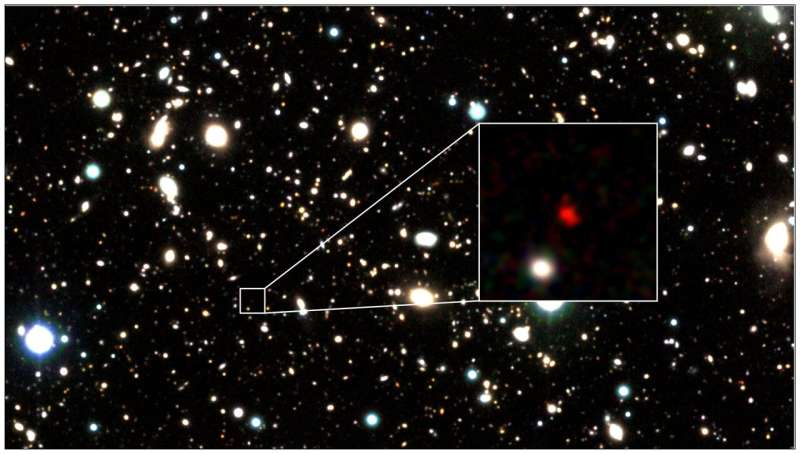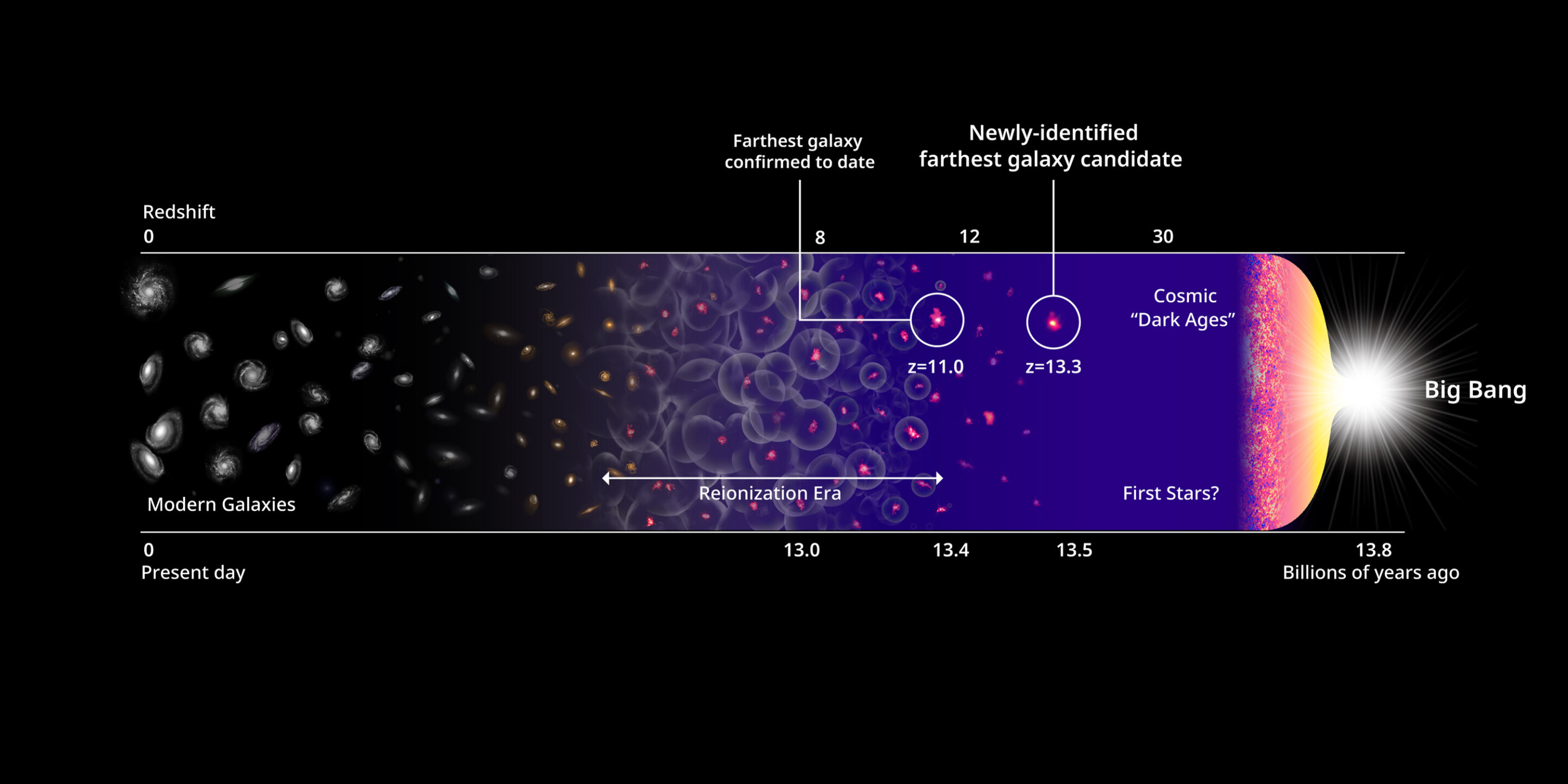
HD1, object in red, appears at the center of a zoom-in image. Credit: Harikane et al.
Persistence pays off, particularly in terms of seeing just how far researchers can peer into the past, in this case, 13.5 billion years when discovering the oldest galaxy in the universe to date.
An international team of astronomers, including researchers at the Center for Astrophysics | Harvard & Smithsonian, has spotted the most distant astronomical object ever: a galaxy.
Named HD1, the galaxy candidate is some 13.5 billion light-years away and is described Thursday in the Astrophysical Journal. In an accompanying paper published in the Monthly Notices of the Royal Astronomical Society Letters, scientists have begun to speculate exactly what the galaxy is.

Timeline displays the earliest galaxy candidates and the history of the universe. Credit: Harikane et al., NASA, EST and P. Oesch/Yale.
HD1 was discovered after more than 1,200 hours of observing time with the Subaru Telescope, VISTA Telescope, UK Infrared Telescope and Spitzer Space Telescope.
"It was very hard work to find HD1 out of more than 700,000 objects," says Yuichi Harikane, an astronomer at the University of Tokyo who discovered the galaxy. "HD1's red color matched the expected characteristics of a galaxy 13.5 billion light-years away surprisingly well, giving me a little bit of goosebumps when I found it."
Persistence pays off indeed. :)



No comments:
Post a Comment